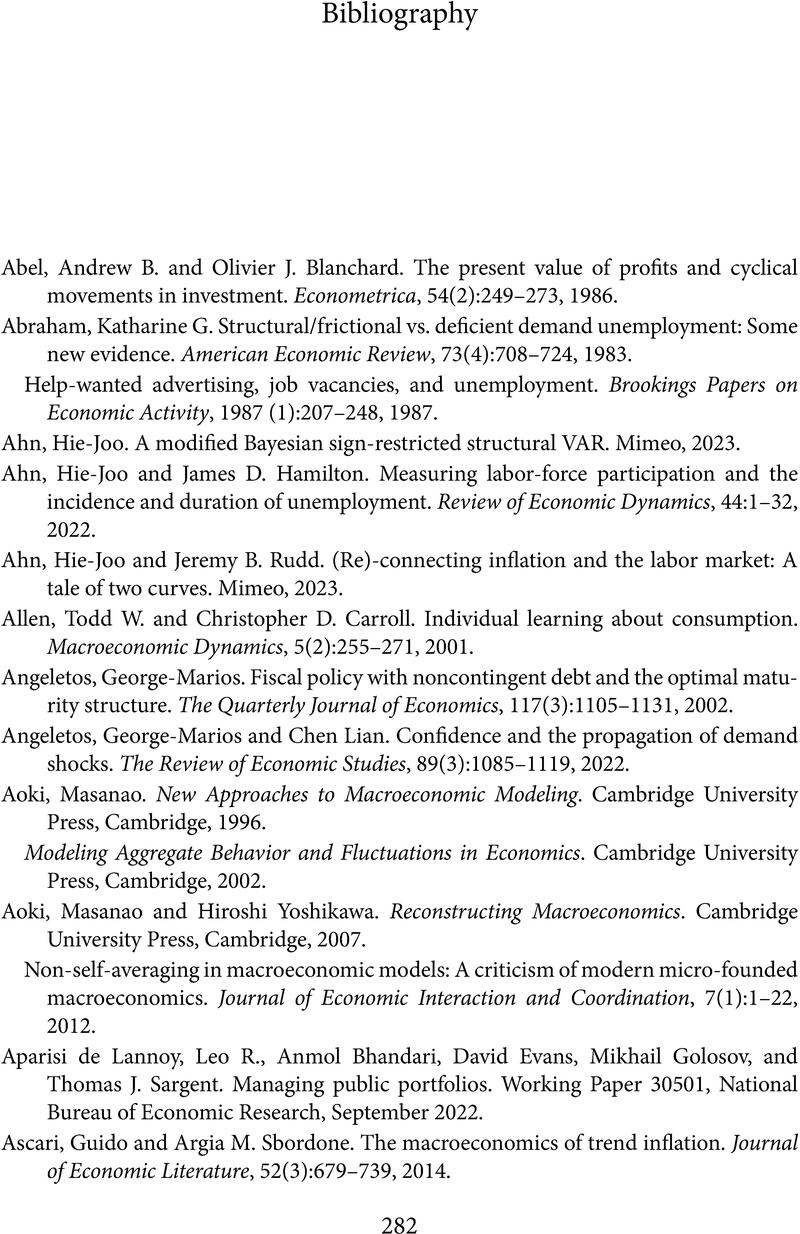Book contents
- Frontmatter
- Epigraph
- Contents
- Figures
- Tables
- Preface
- 1 Introduction: Is Macroeconomics Useful?
- 2 Trends and Cycles, Shocks and Stability
- 3 Determinants of Aggregate Spending and Saving
- 4 Production Functions and Growth Accounting
- 5 The Macroeconomics of “the” Labor Market
- 6 Understanding US Inflation Dynamics
- 7 What Does Monetary Policy Do?
- 8 What Does Fiscal Policy Do?
- 9 Conclusion: Is (Macro)economics Useful?
- Appendix A Measuring Prices
- Appendix B Measuring Output
- Appendix C Measuring Employment
- Appendix D Seasonal Adjustment in a (Very Small) Nutshell
- Appendix E Other Odds and Ends
- Bibliography
- Index
- References
- Frontmatter
- Epigraph
- Contents
- Figures
- Tables
- Preface
- 1 Introduction: Is Macroeconomics Useful?
- 2 Trends and Cycles, Shocks and Stability
- 3 Determinants of Aggregate Spending and Saving
- 4 Production Functions and Growth Accounting
- 5 The Macroeconomics of “the” Labor Market
- 6 Understanding US Inflation Dynamics
- 7 What Does Monetary Policy Do?
- 8 What Does Fiscal Policy Do?
- 9 Conclusion: Is (Macro)economics Useful?
- Appendix A Measuring Prices
- Appendix B Measuring Output
- Appendix C Measuring Employment
- Appendix D Seasonal Adjustment in a (Very Small) Nutshell
- Appendix E Other Odds and Ends
- Bibliography
- Index
- References
Summary

- Type
- Chapter
- Information
- A Practical Guide to Macroeconomics , pp. 282 - 297Publisher: Cambridge University PressPrint publication year: 2024

